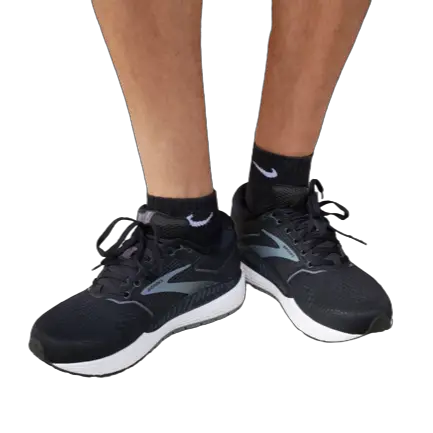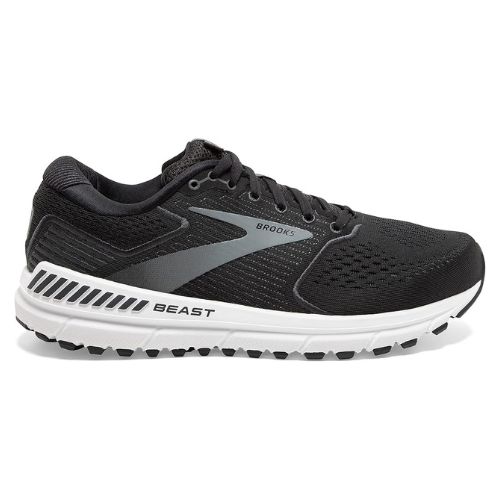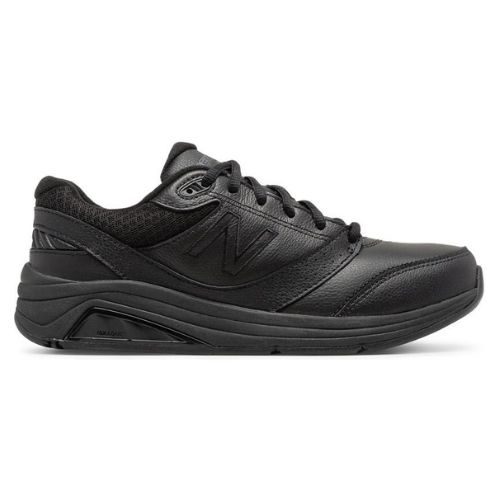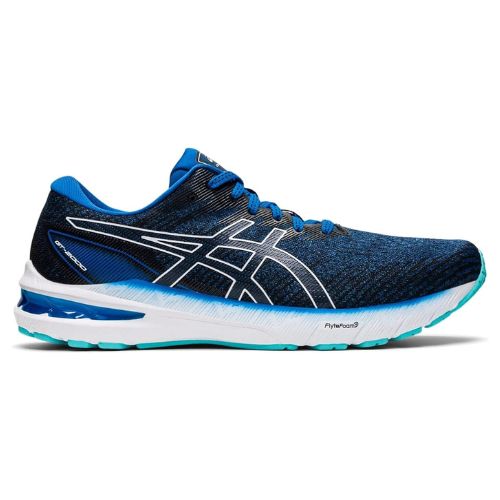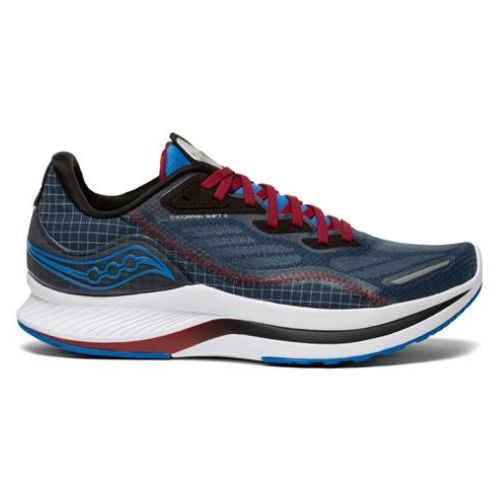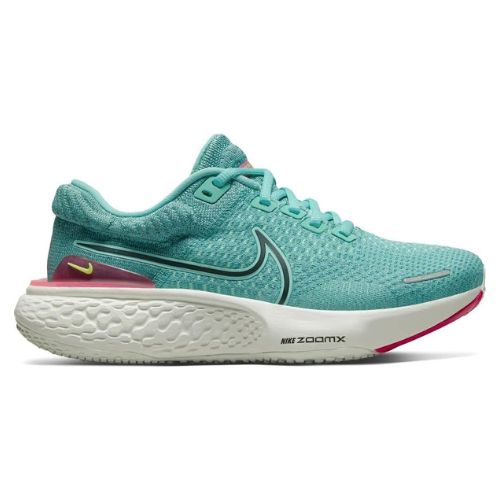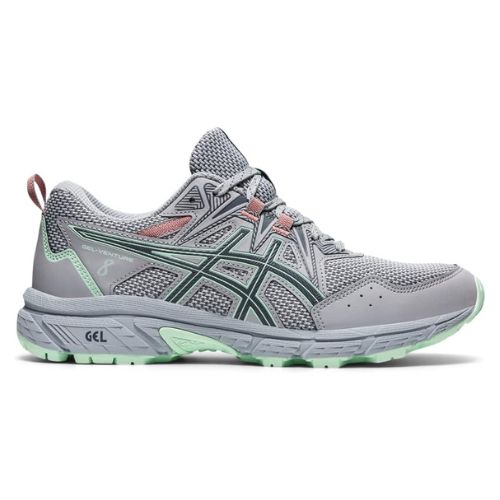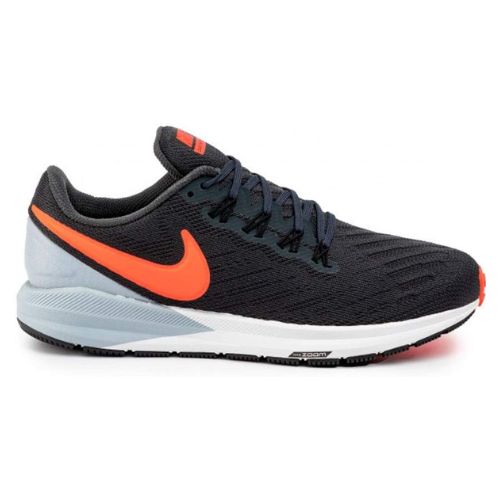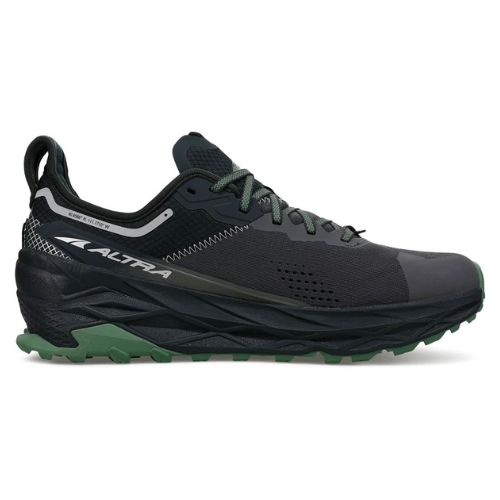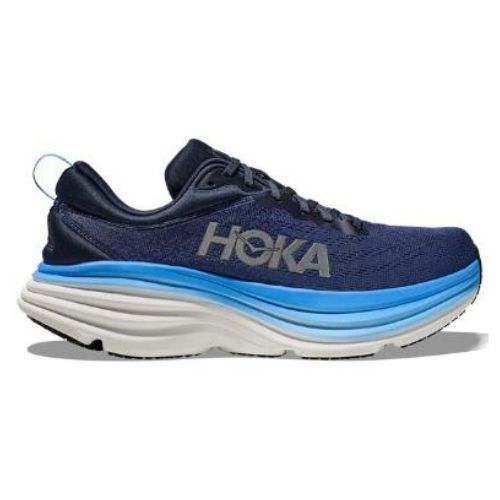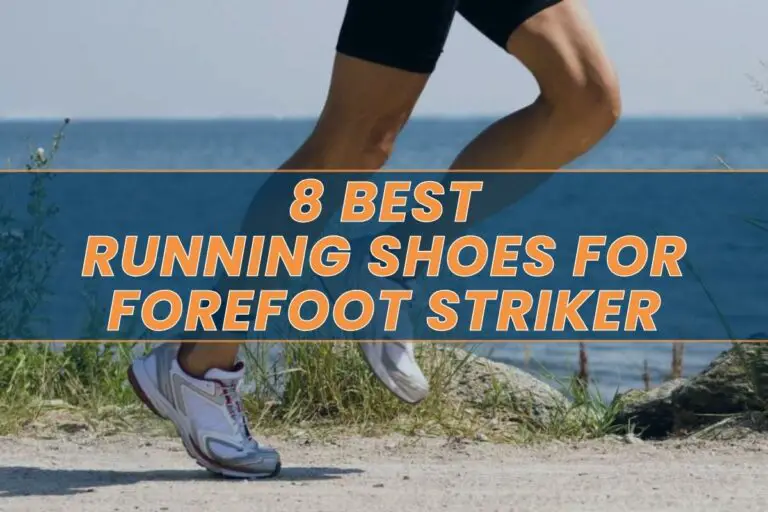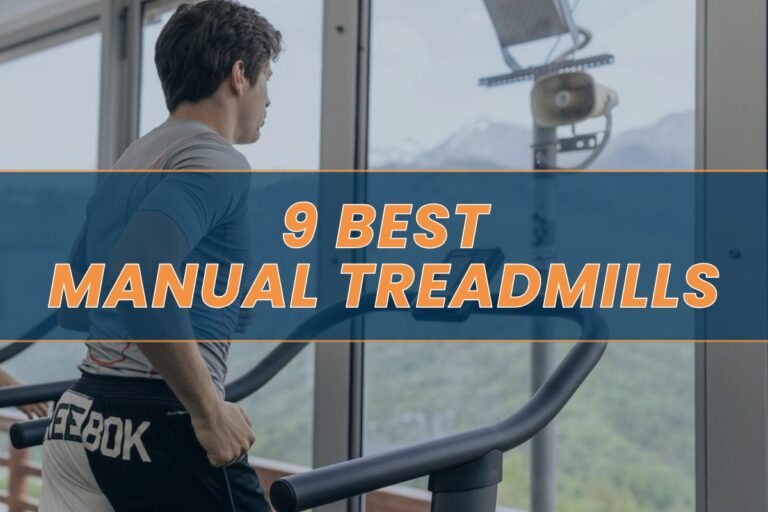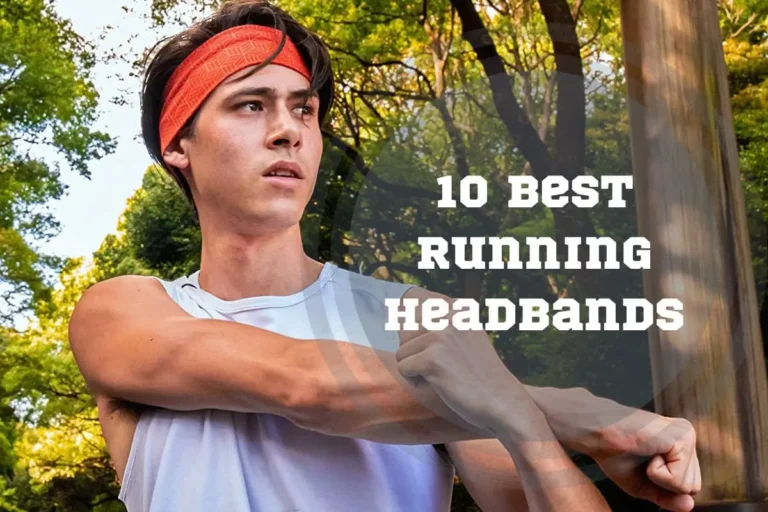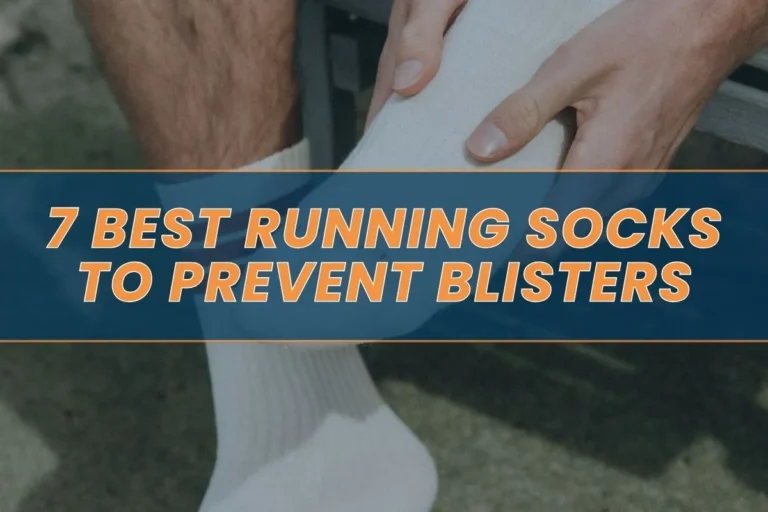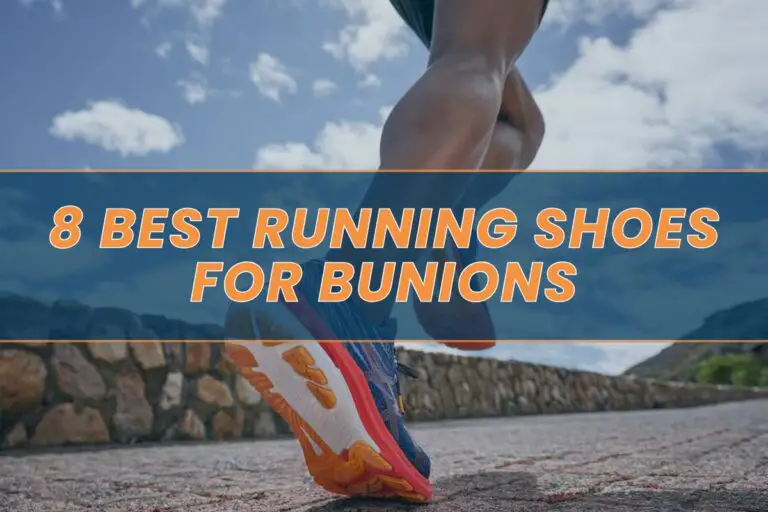9 Best Shoes for Peroneal Tendonitis in 2025
If you are looking for the best shoes for peroneal tendonitis, you are probably pretty tired of chronic foot pain. If that’s the case, you are not alone! This condition affects many runners, dancers, and other athletes. It can be caused by repetitive stress and direct trauma.
In a HURRY? Skip to Our Pick
Brooks Men’s Beast ’20. Perfect for peroneal tendonitis, it offers superior comfort, protection, and symptom relief. The unique heel fit provides maximum motion control, breathability, and a perfect blend of comfort and style.
In this blog post, we will explain the causes of peroneal tendonitis in runners and provide a list of the best shoes that can help relieve pain while providing maximum support. Get ready to find your perfect pair of shoes for peroneal tendonitis so you can look stylish while managing your condition! Read more to learn how these shoes can help relieve symptoms associated with peroneal tendonitis.

Top 9 Best Shoes for Peroneal Tendonitis Reviewed
- Brooks Men’s Beast ’20 – Top Pick
- New Balance Men’s 928 V3 Walking Shoe – Premium Choice
- ASICS Men’s GT-2000 10 Running Shoes – Most Stylish
- Saucony Men’s Endorphin Shift 2 Running Shoe – Best for Long Runs
- Nike Women’s Zoomx Invincible Run – Best For Women
- ASICS Women’s Gel-Venture 8 Running Shoes – Budget Pick
- Nike Men’s Air Zoom Structure 22 Running Shoe – Best For Flat Feet
- ALTRA Men’s AL0A7R6P Olympus 5 – Best for Trail Running
- HOKA ONE ONE Men’s Low-Top Sneaker – For Maximum Cushioning
All of the following shoes feature proper cushioning, stability and control, good arch support, flexibility, and a lightweight design to provide pain relief and maximum support for peroneal tendonitis.
| Products | Expert score | Comfort and fit | Breathability | Material | Flexibility | Cushioning | Support and stability | Value for money |
|---|---|---|---|---|---|---|---|---|
| Brooks Beast ’20 | 4.9 | 5.0 | 5.0 | 4.9 | 5.0 | 5.0 | 4.9 | 5.0 |
| New Balance 928 V3 | 4.9 | 5.0 | 4.7 | 4.9 | 5.0 | 5.0 | 5.0 | 5.0 |
| ASICS GT-2000 10 | 4.9 | 5.0 | 5.0 | 4.8 | 4.9 | 4.9 | 4.9 | 4.9 |
| Saucony Endorphin Shift 2 | 4.9 | 4.8 | 4.9 | 4.9 | 4.9 | 5.0 | 5.0 | 4.8 |
| Nike ZoomX Invincible Run | 4.8 | 4.8 | 4.8 | 4.9 | 5.0 | 5.0 | 4.9 | 4.8 |
| ASICS Gel-Venture 8 | 4.8 | 4.8 | 4.8 | 4.9 | 4.8 | 4.9 | 4.8 | 4.7 |
| Nike Air Zoom Structure 22 | 4.7 | 4.7 | 4.8 | 4.8 | 4.6 | 4.8 | 4.7 | 4.7 |
| ALTRA Olympus 5 | 4.6 | 4.7 | 4.6 | 4.7 | 4.7 | 4.8 | 4.7 | 4.6 |
| HOKA Low | 4.6 | 4.6 | 4.6 | 4.7 | 4.6 | 4.9 | 4.8 | 4.5 |
1. Men’s Running Shoe Brooks Beast ’20
Top Pick
Brooks Beast ’20 has enough cushioning and support to make it one of the best choices when it comes to minimizing pain caused by peroneal tendonitis.
Comfort and Fit:
Breathability:
Material:
Flexibility:
Cushioning:
Support and Stability:
Value for Money:
Expert Score:
The Brooks Men's Beast '20 running shoe is an ideal choice for runners with peroneal tendonitis. Its supportive cushioning design offers superior comfort to the user while providing additional protection to the ailing area of the foot, helping reduce painful symptoms associated with this condition.
This shoe’s slightly heavier structure might make it look like other conventional running shoes, but it has a hidden strength–a lightweight layer of cushioning over soft elements, providing ultimate support and stability during physical activities.
Its unique fit around the heel ensures maximum motion control and breathability, as well as the optimal blend of comfort and style.
- Material: 100% synthetic
- Sex: Men
- Cushioning: DNA Loft
- Shock absorption: High
- Drop: 12 mm
- Color: Black/ebony/gray, blue/gray/peacoat
- Weight: 11.7 oz
- Size: 8-13 (wide and X-wide options)
- Price/quality: Excellent value for money
Pros:
- Enhanced fit around the heel.
- Soft but responsive cushioning.
- Holistic support.
Cons:
- Some users find the shoe a bit heavy.
- May be too wide for narrow feet.
2. Men's Walking Shoe New Balance 928 V3
Premium Choice
New Balance Men's 928 V3 Walking Shoe
With great features such as superior arch protection, full-body foam cushioning, and medial post, New Balance Men's 928 V3 are designed to keep you on your feet longer without any issues.
Comfort and Fit:
Breathability:
Material:
Flexibility:
Cushioning:
Support and Stability:
Value for Money:
Expert Score:
The New Balance Men's 928 V3 offers excellent walking support, making it the best walking shoes for peroneal tendonitis. Engineered to provide maximum ankle stability and comfort, the shoe is available in varying widths tailored to different foot sizes for a comfortable fit.
Its heel-center cushioning system provides shock absorption, while the Walking Strike Path technology helps guide your feet through a smooth gait cycle. All these features make New Balance sneakers for peroneal tendonitis an ideal choice for runners who want long-term relief from pain and discomfort.
- Material: 100% leather
- Sex: Men
- Cushioning: ABZORB cushioning
- Shock absorption: High
- Drop: Medium
- Color: Black, bone
- Weight: 17.6 oz
- Size: 7-16 (wide, X-wide, XX-wide)
- Price/quality: Excellent value for money
Pros:
- Removable polyurethane footbeds.
- Hook-and-loop closure is easy to adjust for swelling feet.
- Good arch support.
Cons:
- Leather upper is less breathable than in mesh models.
- This model is heavier compared to other products.
3. Men's Running Shoes Asics Gt-2000 10
Most Stylish
ASICS Men's GT-2000 10 Running Shoes
The ASICS GT-2000 10 has soft cushioning and high ankle support so you don’t have to worry about getting injuries or worsening your pain while running.
Comfort and Fit:
Breathability:
Material:
Flexibility:
Cushioning:
Support and Stability:
Value for Money:
Expert Score:
The ASICS GT-2000 10 is one of the best running shoes for peroneal tendonitis, providing cushioning and support that help runners with pain relief and stable, controlled motion.
It features supportive overlay technology in areas of stress or impact to reduce injury risk, while its lightweight Gel rearfoot and forefoot and FLYTEFOAM® midsole provides superior cushioning and responsiveness.
Additionally, the shoe has a flexible forefoot for natural movement without compromising stability. The outsole rubber gives you traction to stay agile on multiple surfaces, included but not limited to grassy terrain and pavement.
- Material: Synthetics
- Sex: Men
- Cushioning: FLYTEFOAM® + Gel
- Shock absorption: High
- Drop: 8 mm
- Color: 21 designs
- Weight: 9.9 oz
- Size: 7-15 (wide, X-wide)
- Price/quality: Excellent value for money
Pros:
- Extra lightweight.
- Rearfoot and forefoot GEL Technology Cushioning System for reduced strain and improved performance.
- Lighter and softer FLYTEFOAM Propel Technology.
Cons:
- May run a bit small.
- May be too wide for narrow feet.
4. Endorphin Shift 2 Men's Running Shoe By Saucony
Best for Long Runs
Saucony Men's Endorphin Shift 2 Running Shoe
Saucony Men's Endorphin Shift offers one of the best options out there made specifically for runners wanting to alleviate pain from peroneal tendonitis.
Comfort and Fit:
Breathability:
Material:
Flexibility:
Cushioning:
Support and Stability:
Value for Money:
Expert Score:
The Saucony Men's Endorphin Shift 2 Running Shoe is designed for runners with peroneal tendonitis in mind. Featuring an improved fit with a thinner heel counter and more breathable mesh upper, the Endorphin Shift 2 also utilizes Saucony's SPEEDROLL technology to deliver effortless speed during your run.
Along with its PWRUN cushioning for comfort and responsiveness, this shoe provides excellent arch support, shock absorption, stability, and control. These shoes are perfect for those going the extra mile or doing high-tempo runs!
- Material: Mesh and leather
- Sex: Men
- Cushioning: PWRUN cushioning
- Shock absorption: High
- Drop: 4 mm
- Color: 12 designs
- Weight: 10.4 oz
- Size: 7-15
- Price/quality: Good value for money
Pros:
- Anti-slip laces for a perfect fit.
- Propulsive SPEEDROLL Technology with advanced footwear geometry.
- More responsive PWRRUN foam cushioning.
Cons:
- Some users find this shoe a bit snug.
- This model does not have wide options.
5. Nike Zoomx Invincible Run Shoes For Women
Best for Women
Nike Women’s Zoomx Invincible Run
Nike Women's Zoomx are ideal for female runners suffering from peroneal tendonitis who require a well-balanced pair of shoes to help alleviate their pain during runs.
Comfort and Fit:
Breathability:
Material:
Flexibility:
Cushioning:
Support and Stability:
Value for Money:
Expert Score:
The Nike Zoomx Invincible Run is women's shoes for peroneal tendonitis that provides maximum shock absorption and stability. The wider forefoot of these shoes provides stability, while the curved outsole allows for easier heel-to-toe transitions when running or walking.
In addition, they come with a Nike ZoomX midsole that offers amazing energy return and cushioning. With their Flywire and Flyknit technology in the upper part of the shoe, they offer unmatched support and comfort throughout a run, regardless of distance.
- Material: Mesh
- Sex: Women
- Cushioning: Nike ZoomX technology
- Shock absorption: High
- Drop: Medium
- Color: 13 designs
- Weight: 9.65 oz
- Size: 5-11
- Price/quality: Good value for money
Pros:
- Light ZoomX cushioning with high energy return.
- Flywire and Flyknit breathable upper with minimum weight and maximum support.
- Smooth heel-to-toe transition.
Cons:
- Colors may come off after intense washing.
- May not fit wide feet.
6. Gel-Venture 8 Running Women Shoes By Asics
Budget Pick
ASICS Women's Gel-Venture 8 Running Shoes
These shoes offer added ankle support to not only relieve pain from tendonitis, but also create stability and help prevent any future injuries caused by running.
Comfort and Fit:
Breathability:
Material:
Flexibility:
Cushioning:
Support and Stability:
Value for Money:
Expert Score:
If you’re looking for the best women's shoes for peroneal tendonitis, try ASICS. For female runners dealing with peroneal tendonitis, the ASICS Women's Gel-Venture 8 Running Shoes provide excellent comfort and support. These shoes are designed for outdoor activities like trail running and light hiking, as they feature a combination of cushioning and shock absorption that give you great traction in all terrain.
Rearfoot support helps reduce stress on your feet, while the highly durable construction allows for extra protection against abrasion or rocks during trail runs. Furthermore, since high arches can cause additional strain to the peroneal area when running long distances, the Gel-Venture provides soft cushioning specifically tailored to ease your runs.
- Material: Mesh and leather
- Sex: Women
- Cushioning: ASICS Gel technology
- Shock absorption: High
- Drop: 10mm
- Color: 23 designs
- Weight: 8.9 oz
- Size: 5-12 (wide options)
- Price/quality: Good value for money
Pros:
- Gel-Venture cushioning for reduced impact.
- Re-engineered outsole for better traction.
- Durable upper.
Cons:
- May run small due to extra padding.
- Some users report that the fit is too snug.
7. Men's Running Shoe Nike Air Zoom Structure 22
Best for Flat Feet
Nike Men's Air Zoom Structure 22 Running Shoe
This running shoe is suitable for flat feet. It offers superior stability thanks to its well-designed arch support system, which helps promote proper alignment when out on the track.
Comfort and Fit:
Breathability:
Material:
Flexibility:
Cushioning:
Support and Stability:
Value for Money:
Expert Score:
The Nike Men's Air Zoom Structure 22 is a great choice for those suffering from peroneal tendonitis due to their pain-relieving and supportive features. The shoe has a triple-density dynamic support system, featuring a firm midsole that provides stability underfoot, while also cushioning impact from hard ground surfaces.
An additional cushioned crash pad in the heel area further reduces shock absorption when running or walking for long durations. The shoes are lightweight and flexible, ensuring that users are able to move with ease without feeling restricted or weighed down.
- Material: Synthetics
- Sex: Men
- Cushioning: Nike Air Zoom technology
- Shock absorption: Medium
- Drop: Medium
- Color: 7 designs
- Weight: 13.6 oz
- Size: 7.5-14
- Price/quality: Good value for money
Pros:
- Help relieve pain.
- Triple-density support.
- Cushioned pad in the heel.
Cons:
- Some users find this shoe a bit snug.
- Wide option not available.
8. ALTRA Olympus 5 Men's Shoe
Best for Trail Running
ALTRA Men's AL0A7R6P Olympus 5
If you want something more stable but still lightweight, the ALTRA Men’s Olympus 5 delivers both without compromising on performance or style.
Comfort and Fit:
Breathability:
Material:
Flexibility:
Cushioning:
Support and Stability:
Value for Money:
Expert Score:
The ALTRA Men's Olympus 5 is designed to provide support and pain relief for runners with peroneal tendonitis. With an engineered mesh upper, breathability and comfort are ensured throughout the day.
The Olympus 5 also provides good grip on any terrain, perfect for running off-road or hiking in difficult conditions. With its 33mm of stack height, it offers plenty of cushioning that will help reduce stress on the foot while still providing great flexibility in the sole for those looking for an efficient run.
- Material: Synthetics
- Sex: Men
- Cushioning: Altra EGO MAX foam
- Shock absorption: High
- Drop: Medium
- Color: 9 designs
- Weight: 12.3 oz
- Size: 7-15
- Price/quality: Good value for money
Pros:
- TrailClaw lug pattern for grippy traction.
- Balanced cushioning.
- Extra bounce and added durability.
Cons:
- May not fit extra wide feet.
- Are not very durable compared to other products.
9. Low-top Sneaker For Men Hoka One One
For Maximum Cushioning
HOKA ONE ONE Men's Low-Top Sneaker
These Hokas have been praised for their fit, comfort, traction, lightweight design, and supportive characteristics, which make them a good choice for runners dealing with peroneal tendonitis.
Comfort and Fit:
Breathability:
Material:
Flexibility:
Cushioning:
Support and Stability:
Value for Money:
Expert Score:
The HOKA Men’s Low-Top Sneaker is an ideal choice for runners suffering from peroneal tendonitis. These low-profile sneakers feature a highly cushioned ride, providing excellent support and superior comfort in all activities, including running, walking, and active recovery sessions.
These shoes are designed with excellent arch support and overall stability to help reduce the stress on your feet while still delivering you with optimum power through each stride. The mesh construction offers better breathability, keeping your feet dry and comfortable. In addition, extra cushioning ensures added shock absorption that provides great support and protection during high-impact activities, such as running downhill.
- Material: Synthetics
- Sex: Men
- Cushioning: Hoka DNA cushioning
- Shock absorption: High
- Drop: Medium
- Color: 13 designs
- Weight: 8 oz
- Size: 7.5-14 (wide options)
- Price/quality: Good value for money
Pros:
- Extra soft cushioning.
- Good for walking after foot and knee injuries.
- Help relieve pain and prevent swelling.
Cons:
- Some users may need more padding.
- May be too wide for narrow feet.
What Is Peroneal Tendonitis?
Peroneal or fibular tendonitis is an overuse injury seen in athletes, particularly long-distance runners. It occurs when the small peroneal tendons on the outside of the ankle become irritated, inflamed, or swollen due to constant strain and repetitive stress during running activities.
It's understandable if you want to stay active and continue running when dealing with tendonitis. Unfortunately, that isn't always the best option. Peroneal tendonitis specifically affects tendons on the outside of your foot, which can cause pain in the leg that extends to your hip.
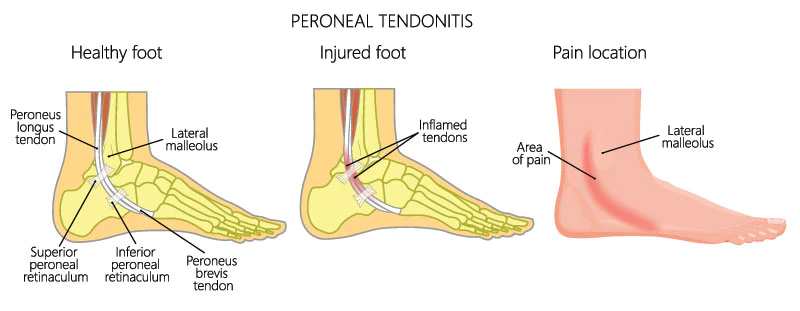
This is usually caused by repetitive activities like running and jumping, so continuing to run while you are afflicted could lead to further damage or injury. As a runner, it’s important for you to recognize potential warning signs of peroneal tendonitis boot as early as possible and seek medical advice from a sports medicine doctor or physician.
What Causes Peroneal Tendonitis in Runners?
Here are the 4 most common causes of peroneal tendonitis in runners:
1. Overuse and Repetitive Stress
The ankles are regularly subjected to overuse and repetitive stress, which is why any kind of long-term activity—such as running —can increase the risk of developing peroneal tendonitis.
This condition happens when tendons in the foot and ankle become irritated or damaged from repeated motion involving the feet and ankles. When too much rotational movement occurs during activities like running or jumping, the resulting movement produces strain on one side of certain anatomic structures.
2. Poor Foot Biomechanics
Poor foot biomechanics, such as overpronation or excessive eversion, can contribute to the development of peroneal tendonitis in runners. Overpronation occurs when the foot rolls inward excessively while you walk or run. It can cause stress to be placed on the outer tendons of the feet, including those of the peroneals.
Eversion, meanwhile, is an outward rolling motion where pressure is applied by the outside edge of heel strike, which can cause inflammation in certain running muscles, eventually leading to tendonitis.
3. Direct Trauma or Injury
A direct injury to the peroneal tendon can be caused by an acute event like a severe ankle sprain, or the result of repetitive overuse. To maintain integrity in the foot and ankle during physical activity, it’s necessary to properly support these structures before exercise begins.
An ankle sprain or similar trauma is commonly associated with athletes due to their frequent running and quick directional changes. In particular, activities that involve repetitive movement for extended periods of time, such as long-distance running, can stress this area.
4. Other Contributing Factors
In addition to overuse and repetitive physical stress, a number of other factors can put runners at risk of developing peroneal tendonitis. Diabetes is linked to an increased risk of developing this condition due to changes in blood sugar levels that make the tendons weak and susceptible to damage over time.
Inflammatory conditions like rheumatoid arthritis and psoriatic arthritis may also contribute to peroneal tendonitis, as joint inflammation puts excessive pressure on these tissues.
3 Main Symptoms of Peroneal Tendonitis in Runners
Common symptoms of peroneal tendonitis in runners include ankle pain, swelling and inflammation, and weakness or instability in the ankle.

1. Ankle Pain
Peroneal tendonitis can cause discomfort or pain along the outside of the ankle, heel, and foot, as well as lateral ankle pain. The intensity of this type of pain often worsens with physical activity and can lead to increasing instability within the joint if left untreated.
Runners with peroneal tendonitis may feel burning, throbbing, or sharp sensations around their ankles, which can affect their overall performance.
2. Swelling and Inflammation
Swelling and inflammation are two of the most common symptoms associated with peroneal tendonitis in runners. The inflammation is caused by over-stressing or injuring the tendons, which results in ruptures or tears in the tissue that can cause swelling and pain.
This type of injury can be very severe and may require immediate medical attention. If left untreated, it could lead to permanent damage to the tendons, as well as ankle weakness or instability.
3. Pain Worsens With Physical Activity
Running and other physical activities can place excessive strain and stress on the peroneal tendons, which may lead to or exacerbate existing pain for those with peroneal tendonitis.
The mechanical forces caused by these activities can cause microtrauma of the tendon fibers, resulting in inflammation, pain, and swollen tissue that worsens with continued activity.
How to Treat Peroneal Tendonitis From Running?
Professional treatment is essential for relieving pain and ensuring a successful recovery from peroneal tendonitis. Here are some of the possible treatments that can help.
1. Rest, Ice, Compression, and Elevation (RICE)
The RICE method is commonly used for soft tissue injuries, such as peroneal tendonitis in runners. It stands for rest, ice, compression, and elevation. The acronym can help you better remember the process.
Resting the affected foot can give it time to heal and reduce inflammation. Icing the ankle can provide relief from pain, while also helping ease swelling and inflammation.
Compressing or wrapping your ankle with a bandage or wearing a compression sock provides extra support to prevent further injury, while also reducing swelling. Finally, elevating your foot above your heart level helps improve blood flow and reduces pooling of fluid at the injury, which speeds up healing time.
2. Physical Therapy and Exercises
Research suggests that a combination of stretching, strengthening, mobilization, and manipulative therapies can reduce pain from this condition, and even prevent future flare-ups.

Pro Tip:
Physical therapists recommend specific resistance exercises to strengthen the muscles around the ankle, as well as functional mobility drills to improve range of motion and flexibility in the joint.
Other beneficial treatments may include training such as balance drills or using wobble boards for greater muscle control.
3. Non-Steroidal Anti-Inflammatory Drugs
Non-steroidal anti-inflammatory drugs (NSAIDs) are commonly prescribed for peroneal tendon syndrome. These medications help reduce inflammation and pain in the affected area, providing relief from symptoms associated with this condition.
Examples of NSAIDs include ibuprofen and naproxen, which are both available as over-the-counter medications, but can also be taken orally in higher doses when prescribed by a doctor. Regular use of NSAIDs allows athletes to extend their running sessions while helping control swelling and pain caused by peroneal tendonitis.
Subscribe to Our Running Newsletter!
Get free running tips from renowned professional athletes and discounts from top-notch brands.
4. Use of Orthotics or Shoe Modifications
Orthotics provide support for the arch, offload pressure from the forefoot, redistribute weight across the foot area, and help control joint motion associated with pronation. All these factors can help prevent pain caused by peroneal tendon injuries.
Custom padding inside shoes is another way to ensure proper fit and reduce excessive pressure that could worsen a condition like peroneal tendonitis. Braces (either heel cup or strap types) can also be helpful, as they help secure weakened tendons, preventing too much movement.
5. Corticosteroid Injections
Corticosteroid injections, also known as cortisone shots, are commonly used for treating peroneal tendonitis in runners. These injections can be done at many orthopedic clinics and help to reduce pain and inflammation associated with the condition.
Depending on the severity of the peroneal tendonitis, an ultrasound-guided corticosteroid injection may be administered. This method of delivering a precise dosage allows for reduced potential side effects and better treatment outcomes when compared to other forms of delivery methods.
6. Surgical Intervention (If Necessary)
For runners diagnosed with unresponsive peroneal tendonitis, surgical intervention may be necessary to remove damaged areas. During the procedure, a doctor is likely to clean out the affected area to reduce inflammation and stop further damage.
Depending on the severity of the injury, surgeons may repair or reconstruct any tear that is present in order to restore range of motion and improve strength. This can greatly decrease pain levels and improve quality of life for individuals living with this condition.
It's important to note that surgery should not be the first treatment option, as it involves risks such as infection and nerve damage.
When Can You Run After Recovering from Peroneal Tendonitis?
Returning to running after recovering from peroneal tendonitis is a gradual process. Most medical and physical therapy experts suggest resting the entire lower limb for 6 to 8 weeks post-injury before gradually increasing activity levels over time.
How and when you can return to running requires individual assessment of factors such as severity of the injury, response to treatment, healing rate, fitness level, and lifestyle needs.
Generally speaking, if peroneal tendonitis is managed conservatively with rest and physical therapy, it may take 2 to 6 months for complete recovery. However, in more complex or severe cases, surgery may be necessary, followed by rehabilitation that lasts 6 to 12 months or longer, depending on the damage.
Peroneal Tendonitis – Best Shoes Features
When selecting a running shoe to help relieve pain from peroneal tendonitis, it is important to consider several factors for better healing and injury prevention.

1. Proper Arch Support
Physical therapists recommend wearing supportive running shoes, which help reduce stress on the peroneal tendon and alleviate symptoms of discomfort. Shoes with good arch support help increase stability in the feet and ankles, while decreasing any unnatural movements that may lead to additional injuries.
With adequate arch support, runners can move more naturally, making them comfortable even if they are suffering from fibular tendonitis.
2. Cushioning and Shock Absorption
When we run, our feet impact the ground, generating great forces that put additional strain on already tender tissues like peroneal tendons. If your current running shoes don't have an adequate cushioning system or are too rigid, they can worsen this effect instead of helping absorb it.

Pro Tip:
Cushioned materials such as EVA foam help with shock absorption and provide a softer surface for the foot to land on. They offer relief by reducing the pressure applied to sore areas around the ankle joint, while also allowing for more natural movement.
3. Stability and Control
Shoes with flexible materials and a good fit provide the necessary stability so that your foot does not pronate or supinate excessively. This keeps stress off of your peroneals as you run.
If your shoes offer proper stability and are lightweight and flexible, then you’ll be less likely to experience any associated pain while engaging in physical activities. Additionally, sufficient heel counter or midsole material helps protect you against over-pronation, which can also cause injury to tendons within the ankle area.
4. Proper Fit and Size
Finding the right fit when selecting running shoes is a crucial part of managing peroneal tendonitis. If your shoes are too tight, this can cause additional pressure on the tendons and exacerbate symptoms.
On the other hand, if they are too loose, this can put you at risk of injury while running due to instability in your ankles.
Avoid opting for narrow toe boxes, as these will compress the toes and could make discomfort worse during physical activity.
Frequently Asked Questions About Peroneal Tendonitis Running Shoes
What Should I Wear for Peroneal Tendonitis?
Orthotics or special shoe inserts that are designed for ankle support and provide padding may help alleviate symptoms, in some cases. For runners, it is important to choose shoes that offer a combination of arch support, cushioning, shock absorption, stability control, flexibility, and lightweight construction.
Can Bad Shoes Cause Peroneal Tendonitis?
Having the wrong shoes can contribute to the development of peroneal tendonitis in runners. Wearing shoes that do not provide proper support or stability can lead to irritation and inflammation of the tendons.
Final Thoughts on Shoes for Foot Tendonitis
When looking for the best shoes for peroneal tendonitis, it’s important to remember that stability, cushioning, shock absorption, and proper fit are all vital factors.
Stability helps prevent injury or re-injury, while also providing comfort and ease of use. Cushioning is critical in absorbing shock upon impact with the ground, which can reduce pain levels caused by this condition significantly.
Additionally, a good fit is essential, as any loose areas on your foot or shoe may rub, delaying healing time.
Our top pick, the Brooks Men’s Beast '20, offers superior support and cushioning to help alleviate some discomfort associated with peroneal tendonitis.
Keep in mind that visiting a physical therapist or an orthopedic doctor prior to purchase may help you find out what type of shoe works best for your individual needs!
What shoes do you prefer for peroneal tendonitis relief? Please share your experience in the comments below.
Also Read:
- Best Training Parachute for Running
- Best Shoe for Haglund’s Deformity
- Best Shoes for Hip and Back Pain
- 6K Run in Miles
- Eggs for Running
- Are Nike Shoes True to Size
- Best Pregnancy Running Belts
- 100 Mile Run Training Plan
- Running vs Sprinting
- Benefits of Walking 6 Miles a Day
References:
- Cleveland Clinic. Peroneal Tendonitis https://my.clevelandclinic.org/health/diseases/22003-peroneal-tendonitis
- Web MD. What to know about Peroneal Tendonitis. https://www.webmd.com/pain-management/what-to-know-peroneal-tendonitis
- J Walt et al. Peroneal Tendon Syndromes. National Library of Medicine. https://www.ncbi.nlm.nih.gov/books/NBK544354/
- Davda K, et al. Peroneal tendon disorders. EFORT Open Rev. 2017;2(6):281-292. Published 2017 Jun 22. https://eor.bioscientifica.com/view/journals/eor/2/6/2058-5241.2.160047.xml
- Hinge Health. Peroneal Tendonitis: Causes, Treatments, and Exercises for Healthy Ankles https://www.hingehealth.com/resources/articles/peroneal-tendonitis/
- Simpson MR, et al. Tendinopathies of the foot and ankle. Am Fam Physician. 2009 Nov 15;80(10):1107-14 https://www.aafp.org/pubs/afp/issues/2009/1115/p1107.html
Why Trust Us?
Pace Passion is committed to helping runners of all levels find the best product to improve their training and running performance. We use a comprehensive methodology for reviewing running and nutrition products for runners, so we only recommend products that we use ourselves or have had the opportunity to test. Read more about product testing here. Learn more about us here.
If you have any questions or suggestions, you can contact us via email – [email protected]

